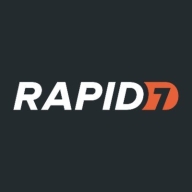

Nutanix Cloud Manager and Rapid7 InsightCloudSec are competing in cloud management, with NCM excelling in integration capabilities and Rapid7 InsightCloudSec leading in security.
Features: Nutanix Cloud Manager offers infrastructure management, automation capabilities, multi-cloud support, and operational efficiency. Rapid7 InsightCloudSec provides comprehensive threat detection, robust security features, and compliance tools.
Room for Improvement: Nutanix Cloud Manager could enhance detailed security and compliance features and streamline setup processes. Rapid7 InsightCloudSec might improve its integration capabilities, ease of use for non-technical users, and expand automation features.
Ease of Deployment and Customer Service: Nutanix Cloud Manager is recognized for straightforward deployment and proactive support, making the process streamlined. Rapid7 InsightCloudSec has a more complex deployment but compensates with a strong support structure, offering reactive assistance.
Pricing and ROI: Nutanix Cloud Manager provides a cost-effective pricing model, focusing on reducing operational overhead for significant ROI. Rapid7 InsightCloudSec, while having a premium pricing model, justifies this with enhanced security outcomes leading to substantial ROI.
| Product | Market Share (%) |
|---|---|
| Nutanix Cloud Manager (NCM) | 5.2% |
| Rapid7 InsightCloudSec | 0.6% |
| Other | 94.2% |


| Company Size | Count |
|---|---|
| Small Business | 24 |
| Midsize Enterprise | 23 |
| Large Enterprise | 64 |
Nutanix Cloud Manager (NCM) is a cloud management tool that drives consistent governance across private and public clouds for its users. The solution brings simplicity and ease of use to managing and building cloud deployments by providing a unified multicloud management that addresses common cloud adoption challenges.
Nutanix Cloud Manager offers four key value drivers:
Nutanix Cloud Manager provides coverage for Nutanix private clouds as well as for VMware's. The solution also supports several popular public cloud providers, including Amazon AWS, Microsoft Azure, and Google Cloud Platform (GCP). NCM provides additional flexibility for users, as it is also available as a fully managed Software as a Service (SaaS). This product allows companies to benefit from all of Nutanix multicloud self-services, application automation, security compliance, and governance, without depending on Nutanix Cloud Infrastructure.
Nutanix Cloud Manager (NCM) Features
Nutanix Cloud Manager (NCM) has features in the four key categories already mentioned. Some of the main capacities of the solution include:
Nutanix Cloud Manager (NCM) Benefits
Nutanix Cloud Manager (NCM) provides its users with several benefits. These include:
Reviews from Real Users
An IT Operations at an energy/utilities company likes Nutanix Cloud Manager (NCM) because the product provides visibility, simplifies operations, and saves time and cost.
Drew P., a network systems administrator at Moda Health, rates NCM highly because the product saves man-hours with excellent speed on outcomes and provides a continuous validation process.
Rapid7 InsightCloudSec is a comprehensive CSPM tool catering to cloud security across Docker and Kubernetes workloads, ensuring rigorous data classification and protection, focusing on AWS and Azure platforms.
Organizations leverage Rapid7 InsightCloudSec for securing cloud environments, integrating smoothly into Kubernetes settings for extensive security oversight. This tool addresses data protection with governance and access controls, providing centralized visibility and alert mechanisms. Users depend on its threat detection capabilities, easing data security management on AWS and Azure. The platform integrates automated processes and agentless scanning to foster an understanding of cloud security dynamics. Enhancements in CNAPP management and more intuitive interfaces could further streamline its use.
What are the most important features of Rapid7 InsightCloudSec?In financial sectors, Rapid7 InsightCloudSec is critical for safeguarding sensitive information and ensuring compliance. Healthcare industries use it to protect patient data, adhering to strict regulatory standards. E-commerce businesses appreciate its ability to secure transaction data while maintaining service availability through reliable threat detection and mitigation strategies.
We monitor all Cloud Management reviews to prevent fraudulent reviews and keep review quality high. We do not post reviews by company employees or direct competitors. We validate each review for authenticity via cross-reference with LinkedIn, and personal follow-up with the reviewer when necessary.